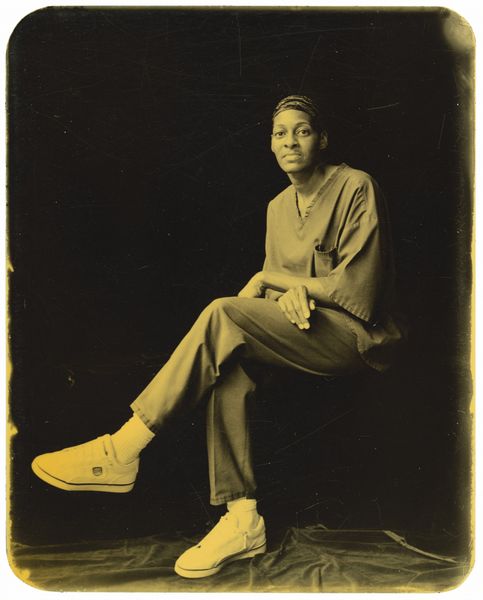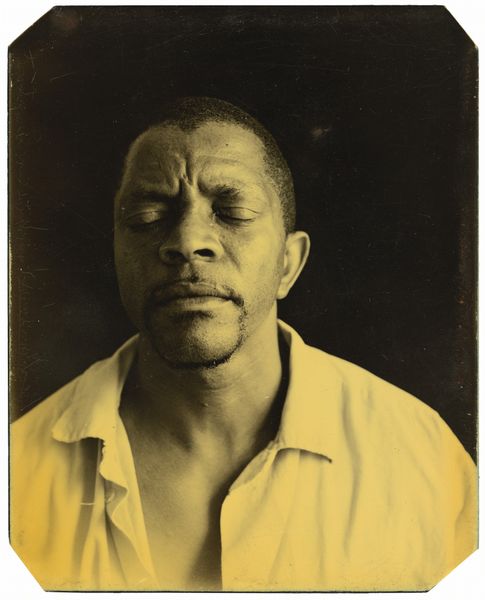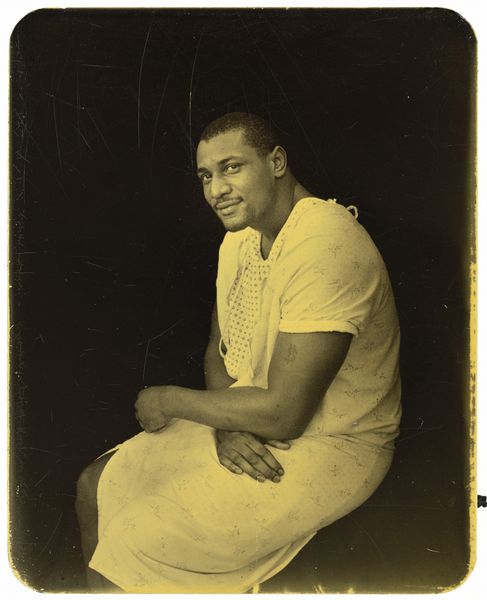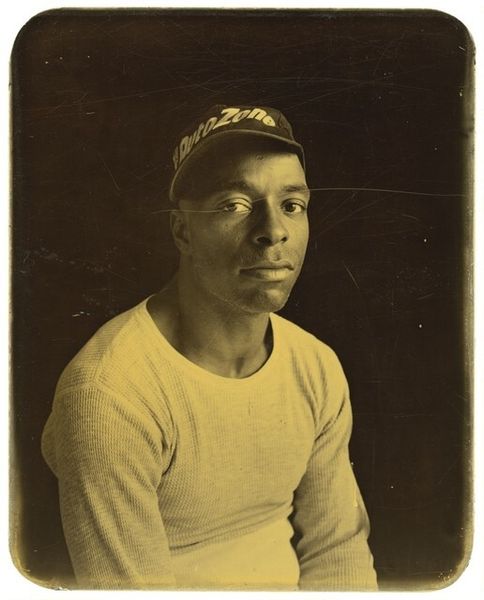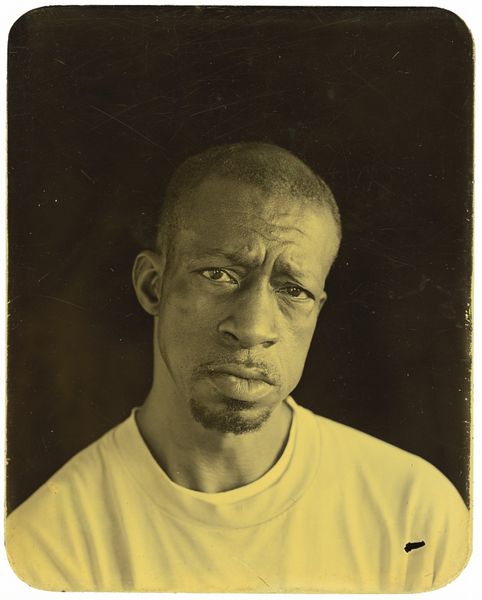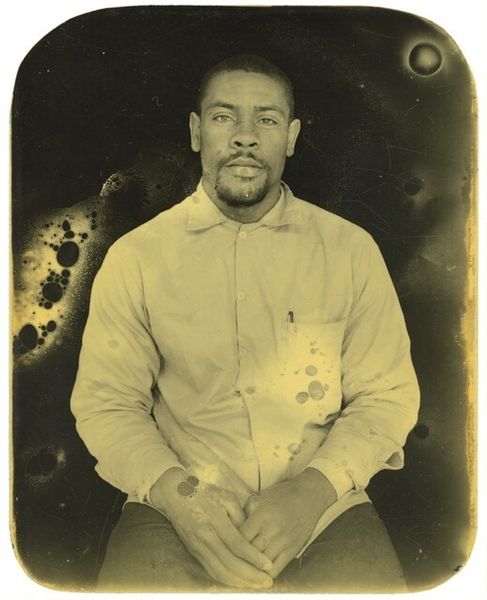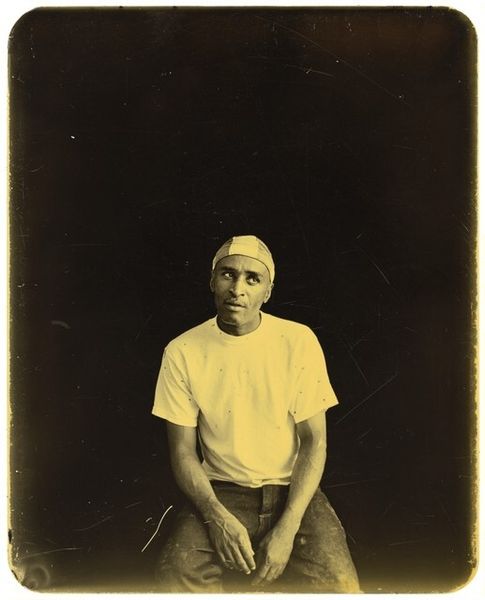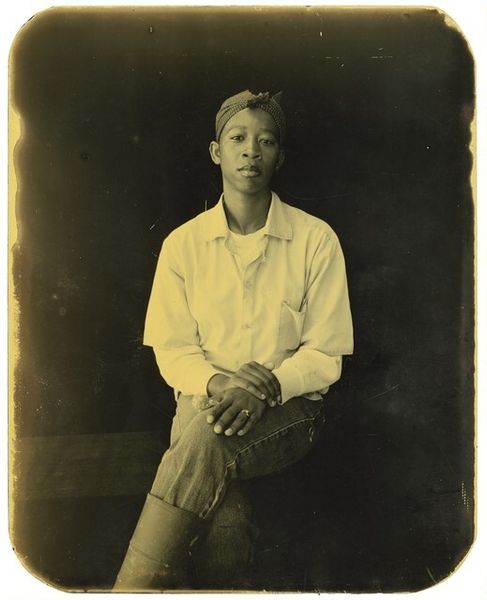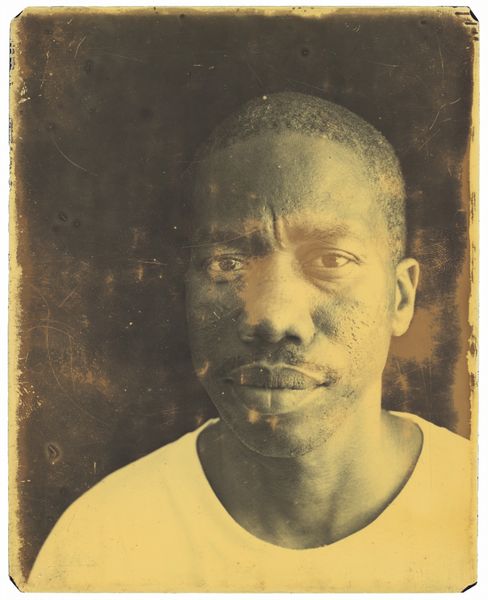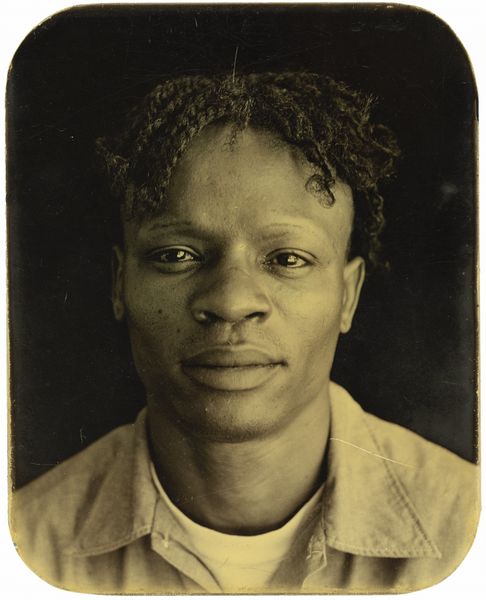
c-print, photography
#
portrait
#
african-art
#
contemporary
#
wedding photograph
#
low key portrait
#
c-print
#
photography
#
portrait photography
#
realism
Dimensions: image/plate: 12.7 × 10.2 cm (5 × 4 in.)
Copyright: National Gallery of Art: CC0 1.0
Editor: This is "Transylvania, Louisiana," a 1999 photograph by Deborah Luster. It's a c-print, and it has this really interesting aged or sepia tone. I am intrigued by how the direct gaze seems both vulnerable and defiant, kind of ambiguous. What do you make of it? Curator: The gaze is critical. Notice how the subject's eyes meet yours head-on, almost challenging. But consider also the historical weight of portraiture, particularly of African Americans. Images like these can be laden with social and cultural baggage tied to representation and agency. What symbols do you perceive that may connect the sitter to a place, time, or identity? Editor: I suppose his clothing—just a simple white t-shirt—doesn’t give much away beyond a sense of the everyday. Also, he does not appear to be smiling at all, but I don't know what meaning to derive from this. Curator: Absence itself is a powerful symbol. What is missing from the picture can be as informative as what is there. The lack of adornment, the very directness… Think about vernacular photography, and its role within family memory. This image perhaps gestures towards lived experiences beyond the frame, holding multiple layers of personal and cultural narrative. Editor: So, it is more than just a picture of an anonymous person, and there might be social commentary regarding that particular period of American society. Curator: Precisely! The seemingly straightforward portrait transcends individual likeness, engaging broader themes of representation, memory, and identity. It becomes a vessel for collective experience. Editor: This really gives me a new appreciation for photography! It is so much more complex than what meets the eye! Curator: Indeed. The photographic portrait is always a dialogue between the sitter, the photographer, and the viewer, a potent blend of symbolism.
Comments
No comments
Be the first to comment and join the conversation on the ultimate creative platform.
